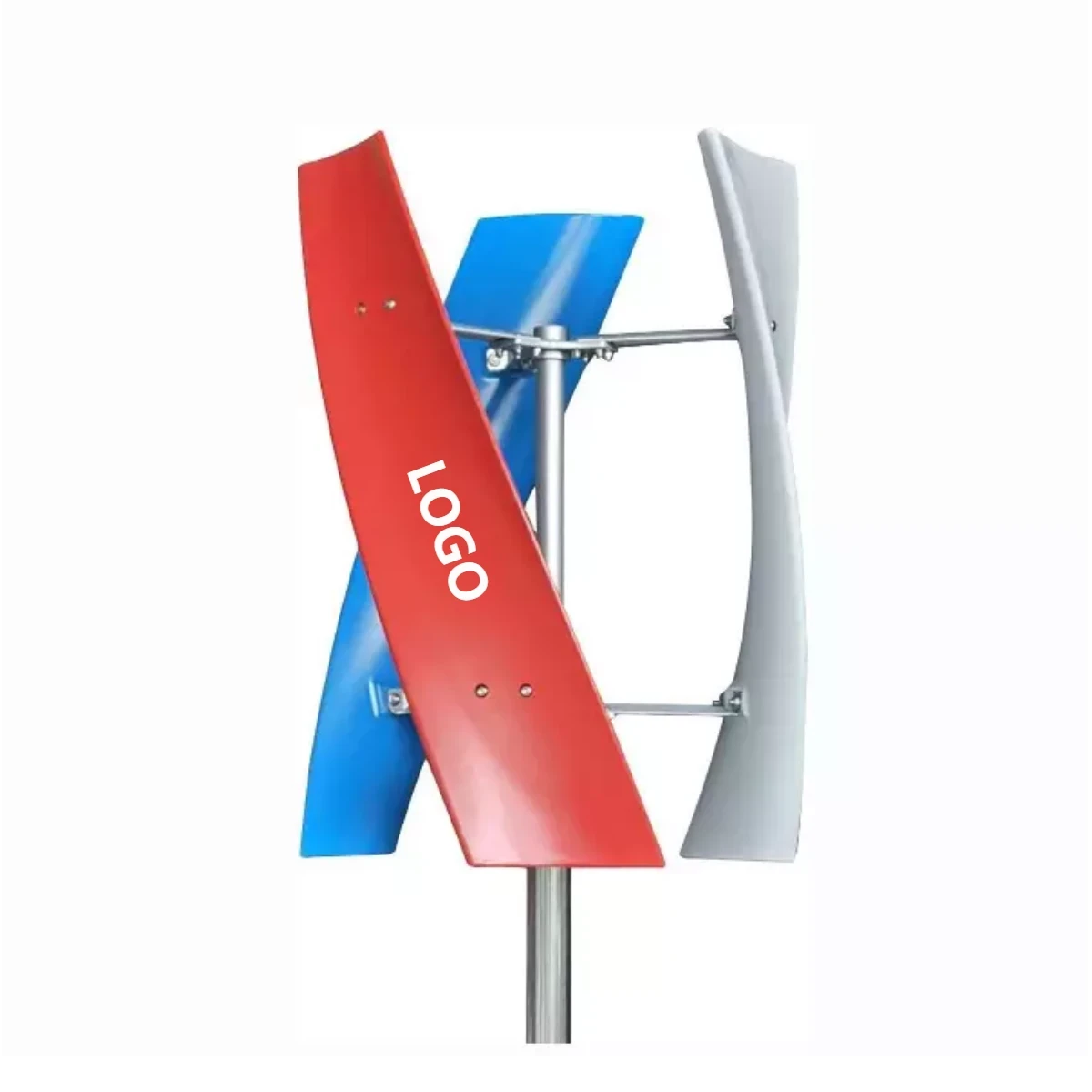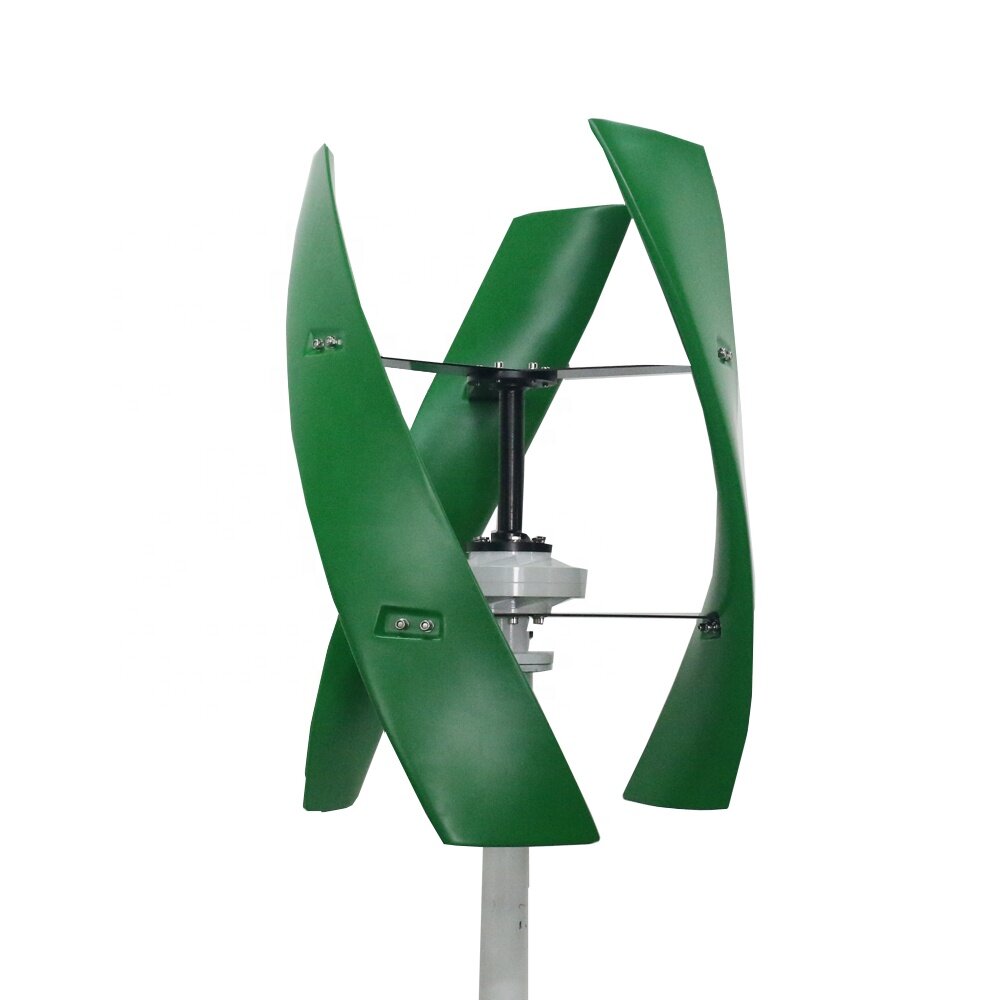Email format error
Email cannot be empty
Email already exists
6-20 characters(letters plus numbers only)
The password is inconsistent
Email format error
Email cannot be empty
Email does not exist
6-20 characters(letters plus numbers only)
The password is inconsistent


What Are the Benefits of a 6kW Vertical Wind Turbine?
As the global demand for renewable energy sources continues to rise, wind power remains at the forefront of sustainable solutions. The 6kW vertical wind turbine is an innovative option that combines efficiency with versatility, making it an attractive choice for both residential and commercial applications. But what exactly are the benefits of using a 6kW vertical wind turbine? In this blog, we will explore its advantages, operational principles, installation considerations, and potential applications.
Understanding the 6kW Vertical Wind Turbine
What Is a Vertical Wind Turbine?
Vertical wind turbines, as the name suggests, have a vertical axis of rotation. Unlike traditional horizontal-axis wind turbines, which typically require significant wind speeds and specific orientations, vertical turbines are designed to harness wind energy from any direction. The 6kW model provides a robust output suitable for various energy needs.

Key Components of a Vertical Wind Turbine
- Blades: Vertical wind turbines often feature two or three blades that are designed to capture wind efficiently.
- Generator: The generator converts mechanical energy from the spinning blades into electrical energy.
- Base and Tower: The sturdy base and tower support the turbine and elevate it above ground level to capture more wind.
- Controller: This regulates the turbine's output, ensuring a stable supply of electricity.
What Are the Advantages of a 6kW Vertical Wind Turbine?
1. Flexibility in Installation
One of the most significant benefits of a 6kW vertical wind turbine is its flexibility in installation. These turbines can be placed in various locations, including urban and suburban environments, without the need for extensive space. Their ability to capture wind from multiple directions also means they can be effective in areas with variable wind patterns.
2. Lower Noise Levels
Vertical wind turbines are generally quieter than their horizontal counterparts. This characteristic makes them particularly suitable for residential areas, where noise pollution can be a concern. Their quiet operation allows homeowners to enjoy the benefits of wind energy without disrupting their daily lives.
3. Enhanced Safety
With their low center of gravity and sturdy design, vertical wind turbines tend to be safer in high winds. They are less likely to tip over, which can be a concern with taller horizontal turbines. This feature enhances their viability for installation in diverse locations, including near residential buildings.
4. Minimal Maintenance Requirements
The 6kW vertical wind turbine typically has fewer moving parts compared to horizontal turbines, leading to lower maintenance requirements. This reduced complexity means less time and money spent on upkeep, making it a cost-effective solution for long-term energy generation.
How Does a 6kW Vertical Wind Turbine Work?
Operating Principles
Vertical wind turbines operate based on the principles of aerodynamics. As wind passes over the blades, it creates lift, causing the turbine to rotate. The rotation drives the generator, converting mechanical energy into electricity. The efficiency of the turbine depends on its design, blade shape, and the speed of the wind.
Wind Speed Considerations
For optimal performance, the 6kW vertical wind turbine typically requires a minimum wind speed to generate electricity effectively. Most models can start generating power at around 3-4 meters per second (approximately 6.7-9 mph) and can reach maximum output at higher wind speeds.
What Are the Installation Considerations?
1. Site Assessment
Before installation, a thorough site assessment is crucial. Factors to consider include:
- Wind Patterns: Understanding local wind conditions helps determine the turbine's potential efficiency.
- Obstructions: Nearby buildings, trees, and other structures can block wind flow, reducing the turbine's effectiveness.
- Zoning Regulations: Local regulations regarding turbine installations should be reviewed to ensure compliance.
2. Height and Placement
The height at which the turbine is installed can significantly affect its performance. Elevating the turbine helps capture more consistent wind. Additionally, proper placement away from obstructions maximizes wind exposure and energy production.
3. Professional Installation
While some homeowners may choose to install their turbines themselves, hiring professionals can ensure a safer and more efficient installation. Professionals can assess the site, recommend optimal placement, and handle any necessary electrical connections.
What Are the Practical Applications of a 6kW Vertical Wind Turbine?
1. Residential Energy Generation
The 6kW vertical wind turbine is an excellent choice for homeowners looking to reduce their reliance on the grid. By generating their own electricity, homeowners can lower energy bills and contribute to a more sustainable lifestyle.
2. Small Business Energy Solutions
Small businesses can also benefit from vertical wind turbines. By incorporating a 6kW turbine into their energy strategy, businesses can reduce operational costs and enhance their commitment to sustainability.
3. Remote Area Power Supply
In remote or off-grid locations, the 6kW vertical wind turbine can provide a reliable source of energy. Combined with battery storage systems, it ensures a continuous power supply even when the wind isn’t blowing.
4. Hybrid Energy Systems
The versatility of vertical wind turbines allows for integration into hybrid energy systems. When paired with solar panels, these turbines can provide a consistent energy supply throughout the year, leveraging both wind and solar resources.
What Challenges Should You Consider?
1. Initial Investment
While vertical wind turbines can lead to long-term savings, the initial investment can be significant. Prospective users should conduct a thorough cost-benefit analysis to assess the financial feasibility of installation.
2. Intermittent Energy Production
Wind energy is inherently variable, meaning that turbines may not always generate power. It's essential to consider supplemental energy sources or battery storage solutions to ensure consistent energy availability.
3. Local Acceptance
Community acceptance can play a role in the successful installation of a wind turbine. Engaging with neighbors and addressing any concerns about aesthetics or noise can foster a more positive reception of the technology.
What Is the Future of Vertical Wind Turbines?
Technological Advancements
The future of vertical wind turbines looks promising, with ongoing innovations in design and materials. Improvements in efficiency, durability, and ease of installation are expected to make these turbines even more appealing to consumers.
Growing Demand for Renewable Energy
As awareness of climate change increases, the demand for renewable energy sources like wind power is likely to grow. Vertical wind turbines, with their unique advantages, will play a crucial role in meeting this demand.
Supportive Policies
Government incentives and policies promoting renewable energy adoption will further support the growth of vertical wind turbines. Such initiatives can include tax credits, grants, and subsidies, making wind energy more accessible to homeowners and businesses alike.
Conclusion
The 6kW vertical wind turbine presents a compelling option for those seeking sustainable energy solutions. With its flexibility in installation, low noise levels, and minimal maintenance requirements, it is well-suited for a variety of applications, from residential use to small businesses and off-grid locations. By understanding the benefits and considerations associated with this technology, individuals can make informed decisions about incorporating wind energy into their energy strategies, paving the way for a cleaner, more sustainable future.

